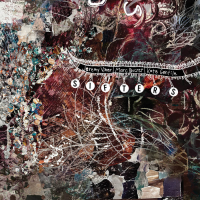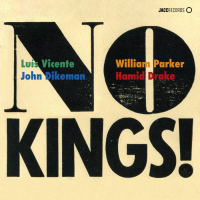Home » Jazz Articles » Album Review » Tubby Hayes: Free Flight
Tubby Hayes: Free Flight
In an obituary for Hayes, Scott was quoted as saying he was "the best jazz musician this country ever produced." People say things such as this in obits, but Scott was in the right ballpark.
Jazz In Britain's 2xCD set Free Flight catches Hayes towards the end of his life, one night during an engagement at Ronnie Scott's Jazz Club in October 1972. Hayes was still struggling with the cardiac problems which had almost killed him a year earlier, and his longtime indulgences in heroin and alcohol were also coming home to roost. His tenor sound is a shade less like a blow-torch than it was in the 1960s; a contemporary writer described him as sounding in 1972 "like a heavier Stan Getz." The night's first set consists wholly of covers, three from the Great American Songbook and one from John Coltrane. Hayes is still steaming: his first solo on Coltrane's "Trane's Blues" lasts for eight fiery choruses. The second set comprises one cover and three Hayes originals, two of them, "Lady Celia" and "Sienna Red," written only recently. The third original, the flute feature "Trenton Place," had been in Hayes' set list since 1967, when he recorded it on what is widely regarded as his chef d'oeuvre, Mexican Green (Fontana, 1968).
Free Flight is also distinguished by Hayes' quartet—completed by pianist Mick Pyne, bassist Ron Mathewson and drummer Tony Levin—the lineup which recorded Mexican Green. The band had drifted apart during the late 1960s / early 1970s, but were reunited on the night of the recording and are still killing it.
"What if?" history is a pointless exercise, but it is hard to avoid it after listening to this album, in particular to "Lady Celia" and "Sienna Red" (which is, unfortunately, cut short by the recording tape running out). Both tunes are built around whole-tone harmonies and suggest Hayes may have been stepping out in a new direction.
The album comes with a twenty-page liner booklet written by Hayes' biographer, Simon Spillett, which is particularly strong on mapping the eventful friendship between Hayes and Ronnie Scott. And, despite being sourced from a cassette recording that Ron Mathewson made on the night, audio quality is surprisingly good. This is a terrific addition to the Tubby Hayes archive.
Track Listing
CD1: I’ve Got You Under My Skin; Trane’s Blues; Someday My Prince Will Come; Seven Steps To Heaven (incomplete). CD2: Trenton Place; Lady Celia; I Thought About You; Sienna Red (incomplete).
Personnel
Additional Instrumentation
Tubby Hayes: tenor saxophone, flute; Mike Pyne: piano; Ron Mathewson: bass; Tony Levin: drums.
Album information
Title: Free Flight | Year Released: 2020 | Record Label: Jazz In Britain
Tags
PREVIOUS / NEXT
Support All About Jazz
 All About Jazz has been a pillar of jazz since 1995, championing it as an art form and, more importantly, supporting the musicians who make it. Our enduring commitment has made "AAJ" one of the most culturally important websites of its kind, read by hundreds of thousands of fans, musicians and industry figures every month.
All About Jazz has been a pillar of jazz since 1995, championing it as an art form and, more importantly, supporting the musicians who make it. Our enduring commitment has made "AAJ" one of the most culturally important websites of its kind, read by hundreds of thousands of fans, musicians and industry figures every month.






















